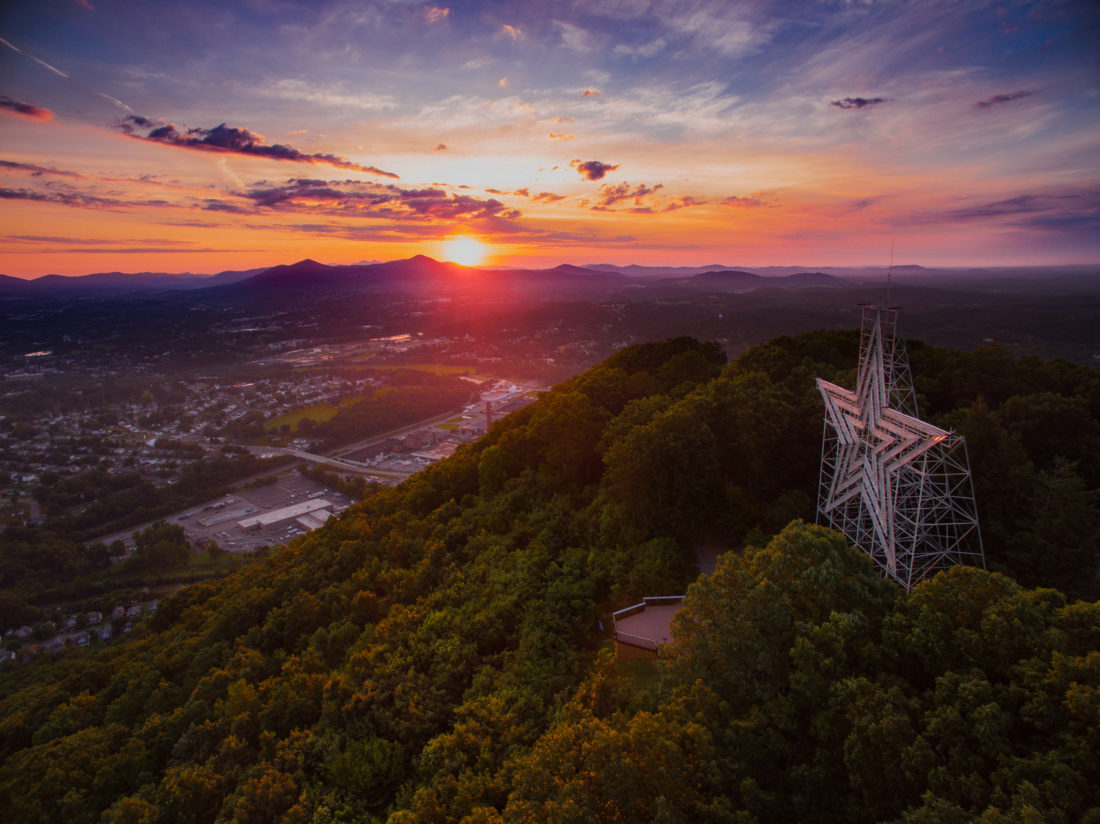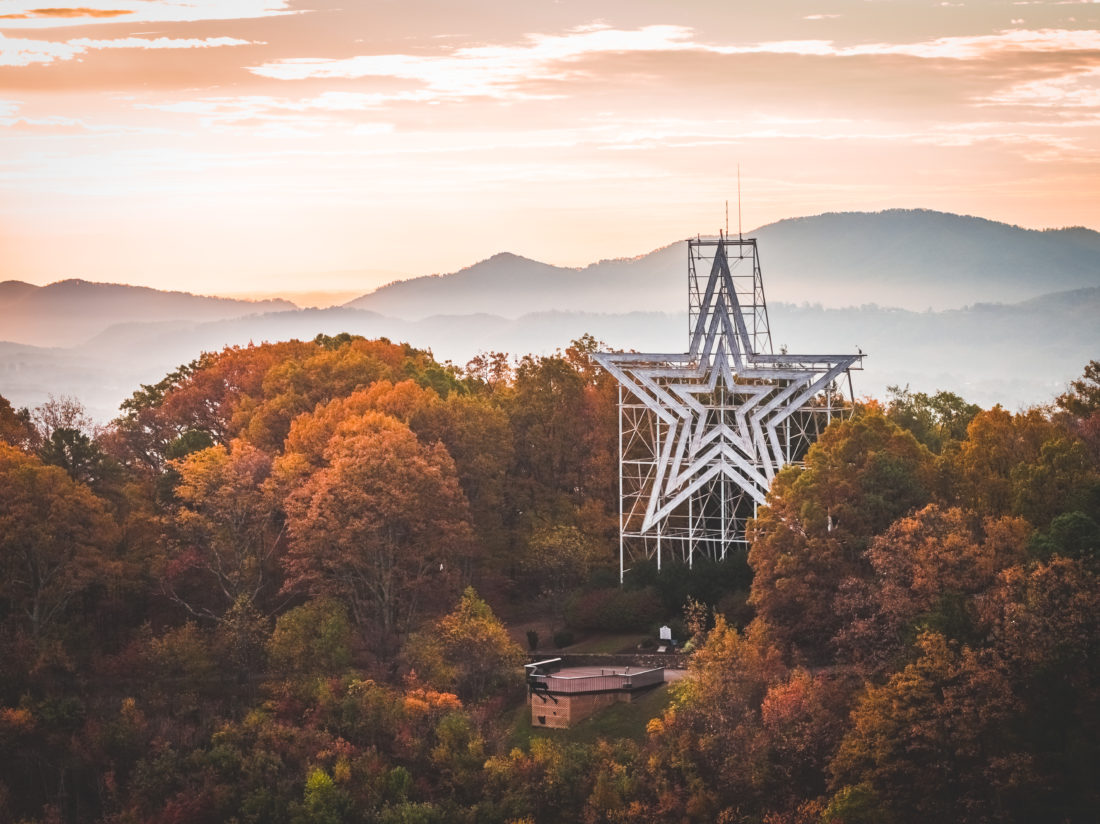For more than seven decades, the Mill Mountain Star—the largest man-made illuminated star in the world—has served as a beacon (and a popular photo op) in the Blue Ridge Mountains of Roanoke, Virginia. But many admirers may not realize how the landmark originated.
In 1949, the Roanoke Merchants Association and Chamber of Commerce were looking for a way to mark the beginning of the holiday shopping season. They enlisted the help of local companies, and the Roy C. Kinsey Sign Company stepped up, designing and installing the neon sign with more than two-thousand feet of tubing, as did the Roanoke Iron and Bridge Works, which provided the steel base. Scrap from a trolley system was used for cables to keep the eighty-eight-and-a-half-foot-tall star sturdy. The project cost a total of $28,000, an entire year’s advertising budget for the associations.
The star shone for the first time on Thanksgiving Eve of that year, along with smaller stars that hung from lampposts. Revelers in attendance for the first lighting included the town’s mayor, A. R. Minton, around a hundred residents, and John Payne, a Roanoke native and actor known for his role in Miracle on 34th Street. The event was featured on national radio and in Life magazine.

After Christmas was over, the residents of Roanoke liked the star so much that they decided to keep it up, and today, visitors can find it up a winding road from town, right off Milepost 120 on the iconic Blue Ridge Parkway. Mill Mountain Park, which surrounds the star, spreads across five hundred acres and offers miles of mountain biking trails and a zoo, which opened in 1952. A StarCam allows viewers to see the vista from the star twenty-four hours a day. The Kinsey Sign Company, which has been in operation since 1907, still maintains the star. And while it usually shines white, the colors change for holidays and significant events like the Bicentennial and September 11.
The star also inspired the Starcropolis, a theater festival that celebrated local stories about the landmark. Katherine Fralin, the organizer of the festival, finds that refugees that have resettled in the city have most lately embraced the star. “One of my favorite things that one of Roanoke’s newcomers said was basically, ‘the star is special to Roanoke because it is beautiful, and I feel at home when I see the star,’” Fralin says. “I think that sums it up—that even somebody literally from the other side of the planet, who has recently relocated here, already feels a part of that.”








